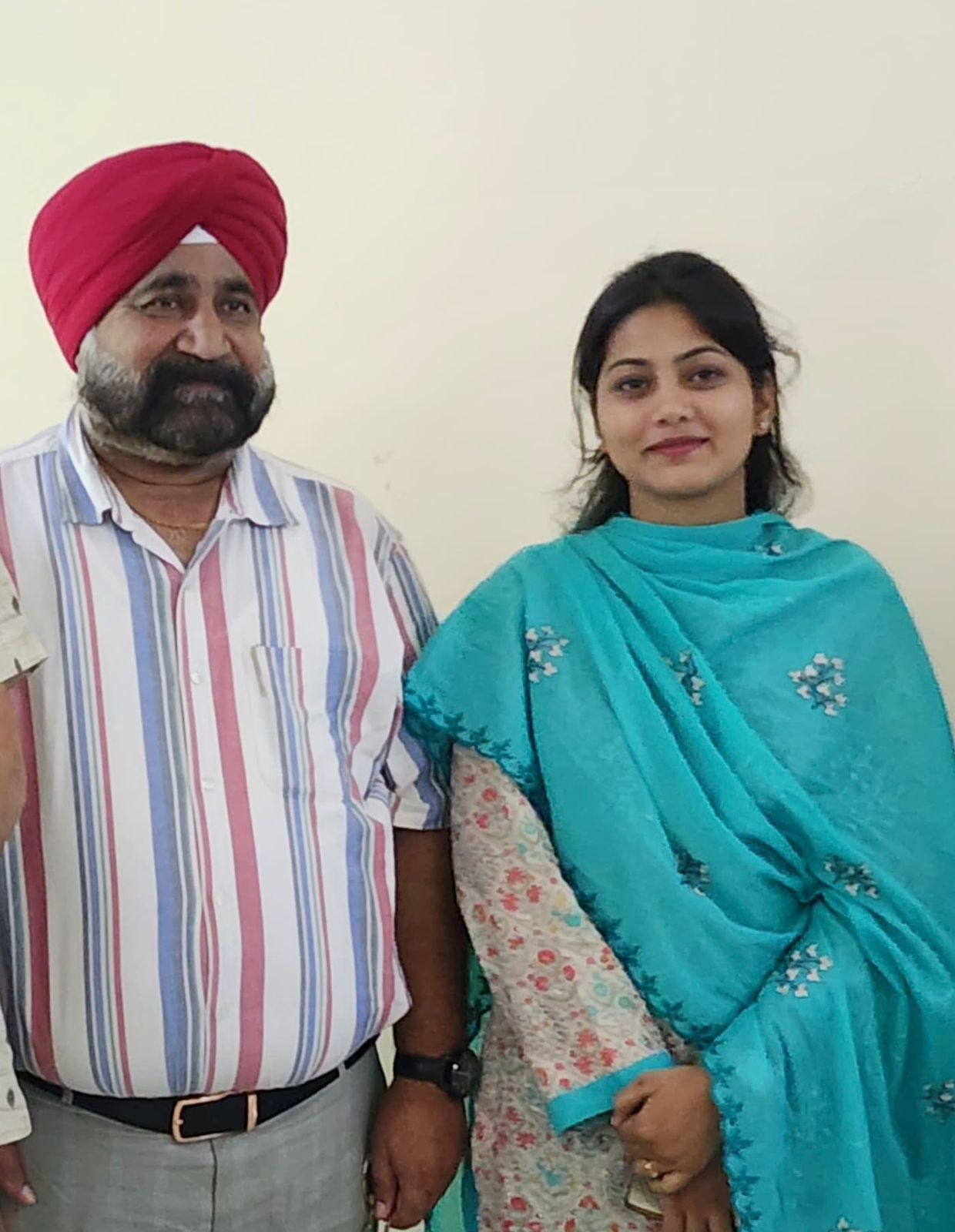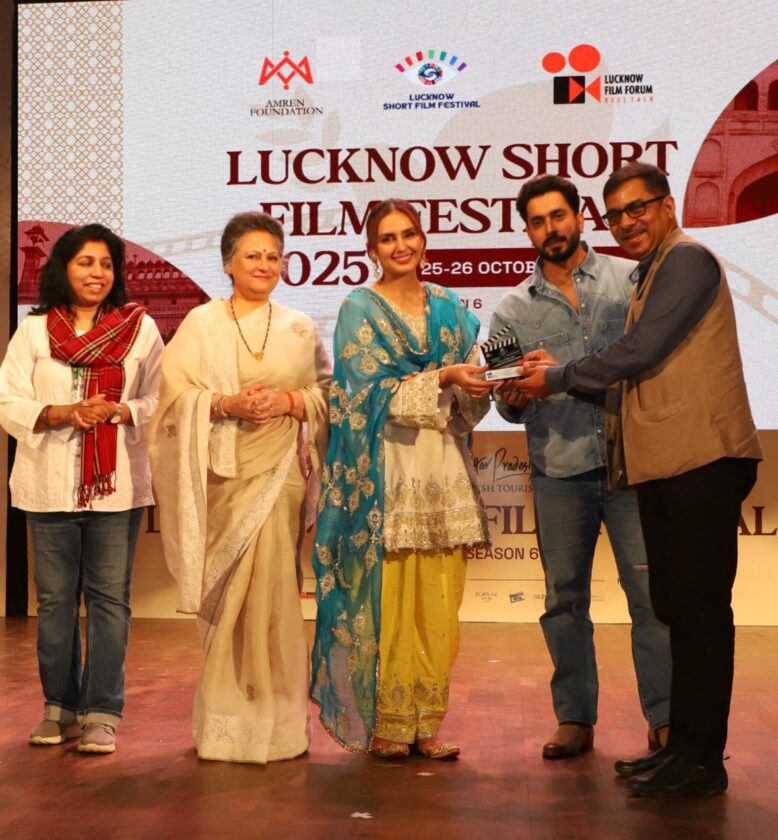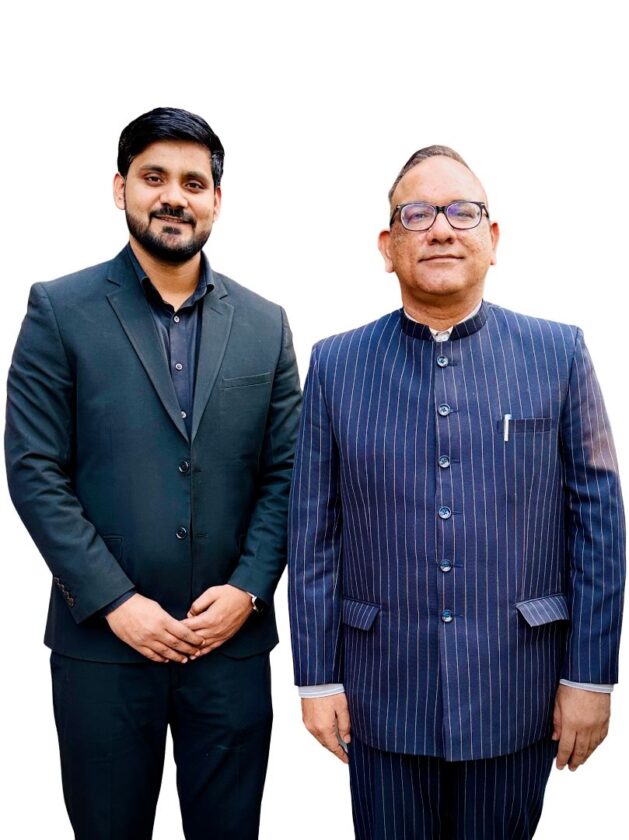Bareilly: Research Scholar, of Law deptt MJPRU Juhi Naseem has completed her research work under the guidance and supervision of Prof.(Dr.) Gurmeet Singh, Professor, K.G.K College, Moradabad. The title of the PhD research is “Law Relating to Child Labour in India with Special Reference to Hotel Industry in Bareilly District”.
This research work provides a comprehensive analysis of child labour laws in India, focusing on their application and enforcement in the hotel industry within Bareilly District. The study explores the socio-economic, legal, historical, regulatory, digital, judicial, and empirical dimensions of child labour, highlighting the persistent gaps between legal frameworks and ground realities. Drawing on constitutional provisions, national statutes, international conventions, case law, and field research, the thesis argues that child labour in the hospitality sector is not merely a legal violation but a symptom of deeper systemic issues like poverty, weak enforcement, and emerging digital exploitation. It proposes multifaceted reforms to eradicate the practice, emphasizing a balance between punitive measures, rehabilitation, and socio-economic empowerment. The research is structured into seven chapters, each building on the previous to offer a nuanced examination of the problem and potential solutions.
It provides an overview of child labour as a persistent socio-economic issue in India, particularly in unregulated sectors like the hotel industry in Bareilly District. It frames child labour as an “indelible scar” on India’s progress, coexisting with modernity and traditional practices despite strong legal commitments.
It also discusses how constitutional provisions such as Article 21 (Right to Life and Personal Liberty) and Article 24 (Prohibition of Employment of Children in Factories), along with the Child Labour (Prohibition and Regulation) Act 1986, demonstrate India’s intent to eliminate child labour. However, it highlights the widening gap between legal intent and reality, exacerbated by socio-economic disparities, lax enforcement, and economic pressures that prioritize profit over ethics.
Focusing on the hotel industry, the research notes its critical role in global and local economies, contributing significantly to GDP (10.9% from tourism in 2024 as per the World Travel & Tourism Council) while creating demand for cheap labour.
Children, often from low-income families, perform tasks like housekeeping, kitchen work, serving guests, and carrying luggage in exploitative conditions, denying them education, health care, and safety. Root causes include poverty, cultural norms viewing child work as essential, and limited access to quality education, perpetuating cycles of underdevelopment.
The research highlights global statistics from the ILO-UNICEF 2025 report, indicating 138 million children in child labour, with 54 million in hazardous work.
In Bareilly, a district blending urbanization and rural underdevelopment, the informal hotel sector fosters child exploitation due to minimal regulation. Children from marginalized backgrounds work as aides, cleaners, or kitchen staff, violating human rights and undermining sustainable development. The research critiques systemic failures in India’s legal apparatus, including informal employment, corruption, and societal acceptance of child labour as a “necessary evil.” It discusses the role of NGOs in awareness and rehabilitation but notes their limited impact in Bareilly due to resistance from local industries.
The research also traces the evolution of child labour laws from pre-industrial times to the contemporary era, concluding that protections emerged gradually in response to economic shifts, humanitarian movements, and legal advancements. Initially normalized in agrarian and early industrial societies where children were economic contributors, child labour gained visibility during the Industrial Revolution, leading to recognition of exploitation in factories.
Key historical milestones include Britain’s Factory Acts (early 1800s), child welfare movements in Europe and America, the formation of the International Labour Organization (ILO) in 1919, and conventions like the Minimum Age Convention (No. 138) and Worst Forms of Child Labour Convention (No. 182).This research also analyzes international and national legal frameworks, concluding that the architecture against child labour is extensive and theoretically capable of elimination if implemented effectively. Internationally, instruments like ILO Conventions No. 138 and 182, the UN Convention on the Rights of the Child (1989), and Sustainable Development Goals (Target 8.7) mandate abolishing child labour.

Nationally, India’s measures include the Constitution (Articles 21, 24, 39), the Child Labour (Prohibition and Regulation) Amendment Act 2016, the Juvenile Justice (Care and Protection of Children) Act 2015, the Right of Children to Free and Compulsory Education Act 2009, and various labour laws. Schemes like the National Child Labour Project (NCLP) add a welfare dimension.
The research also lays down comparative analysis of labour laws in countries like USA, European Union, Canada and various other countries.
The research further examines how digital transformations impact child labour, concluding that technology creates new vulnerabilities while offering regulatory opportunities. The rise of digital platforms, online booking, and algorithmic management increases subcontracting and opacity, enabling child labour in back-end operations like cleaning and delivery.
Platforms obscure exploitation through vague terms and inadequate age verification, benefiting from “algorithmic complicity” prioritizing cost-efficiency. In Bareilly, traditional child labour adapts to digital tech, evading detection. Consequences include data privacy violations, algorithmic wage depression, and psychological harm from surveillance.
The research calls for digital accountability: blockchain verification, biometric authentication, algorithmic auditing, and data-sharing. It urges global cooperation to regulate transnational platforms, harnessing technology for protection rather than exploitation. Landmark Indian Supreme Court cases like M.C. Mehta v. State of Tamil Nadu and Bachpan Bachao Andolan reinforce state responsibility, enforcement, and rehabilitation.
International bodies influence national systems via human rights jurisprudence. Judicial activism fills legislative/executive gaps, but orders need robust implementation. It recommends better directive execution, lower judiciary capacity building, follow-up mechanisms, and community legal literacy for access to justice.
The survey findings from Bareilly’s hotels, concluding a significant awareness gap among child labourers, families, and employers regarding rights. Most surveyed children were school dropouts or never attended, working long hours in unsafe conditions without contracts.
Employers justified child labour economically, families cited poverty and lack of alternatives. Enforcement is weak with limited inspections, low reporting, and minimal rehabilitation. The research identifies a vicious cycle of poverty, illiteracy, unawareness, and weak enforcement sustaining child labour.
Recommendations include targeted awareness, community involvement, NGO-government coordination, and expanded educational/livelihood.
The research also synthesizes the study, reiterating child labour in Bareilly’s hotel industry as a complex socio-legal challenge demanding multifaceted interventions. It emphasizes gaps in enforcement despite robust laws like the Child Labour Amendment Act 2016 and Juvenile Justice Act 2015. Bareilly’s location fosters informal establishments exploiting loopholes, with understaffed inspections (8 inspectors for 4,000+ units) and low conviction rates (12%).
Digital aspects amplify exploitation via gig platforms, opaque systems, and data silos, adding harms like privacy violations. Rehabilitation is inadequate, with facilities lacking specialized programs for addiction, trauma, and nutritional issues.
The following suggestions have been presented for reforms, after 3 years of research:
•Bring formal/informal units under regulation via a centralized database for monitoring, with incentives/penalties.
•Classify child labour in hotel industry as hazardous occupation to prohibit under-14 employment and regulate adolescents, aligning with ILO/UN standards.
•Regular unannounced inspections, increased trained officers, digital tools for real-time reporting, accountability structures, and community involvement.
•Enhance fines linked to revenue, enforce imprisonment for repeats, public offender databases for “naming and shaming.”
•Multi-agency groups like District-Level Task Forces, for joint operations, rescues, and rehabilitation should be created
•Mandatory training on identification, victim-sensitive approaches, and technology.
•Biometric/Aadhaar registration for age verification and traceable trails, should be strictly adhered to for monitoring.
•Online displays of inspections/violations to encourage ethical choices.
•Targeted education via media/community leaders on rights and harms, in high risk communities.
•Free resources, scholarships, bridge programs for dropouts/rescued children should be provided.
•”Child Labour Free” certifications, CSR funds for rehabilitation, should be encouraged.
•Fast-Track Courts should be there for Child Labour Cases for speedy trials.
•Collaboration with ILO/UN for audits, compliance systems, aligning with SDG 8.7.
Report from Akhilesh Chandra Saxena, Bareilly.






